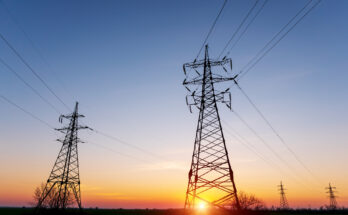The landscape of global energy production and consumption has experienced significant upheavals in the last few decades. From an overarching dependence on fossil fuels to a gradual shift toward renewable energy sources, the narrative of power generation has been continuously evolving. Amidst these changes, the concept of decentralized energy production has gained considerable traction. Decentralized energy, as opposed to centralized systems, involves producing energy close to the point of use rather than at a large, remote facility. Neutrinovoltaic devices, a pioneering advancement in the energy sector, hold the promise of propelling the decentralization movement further. This article delves into the broader implications of decentralized energy sources and elucidates the transformative role neutrinovoltaic technology can play in this realm.
The Age of Decentralization
Historically, our energy infrastructure has been predominantly centralized. Massive power plants, whether coal-fired, nuclear, or hydroelectric, generated electricity that was then transmitted over long distances to reach end-users. This model, though efficient in certain contexts, had its share of drawbacks:
- Transmission Losses: One of the inherent challenges of centralized energy generation is the loss incurred when transmitting electricity over vast distances. Power needs to travel through miles of cables, transformers, and substations before reaching our homes and businesses. Throughout this journey, energy is lost, predominantly due to the resistance encountered in the wires, leading to inefficiencies. This not only means that power plants need to generate more electricity than is actually used, but it also implies a significant waste of resources, be it fuel in traditional plants or even potential energy in renewable installations.
- Infrastructure Vulnerability: The centralized model, by its very nature, places a vast majority of the generation capability in singular or limited locations. This concentration creates vulnerability. A single point of failure, be it from natural calamities such as hurricanes, earthquakes, or floods, or man-made disruptions like equipment malfunctions or even deliberate sabotage, can lead to extensive blackouts. These outages can disrupt daily life, impede emergency services, and result in significant economic losses. Furthermore, repairing and restoring such centralized systems can be time-consuming, prolonging the duration of outages.
- Environmental Concerns: Large-scale, centralized power plants, especially those that burn fossil fuels, come with a slew of environmental ramifications. The burning of coal or gas releases a plethora of greenhouse gases and pollutants into the atmosphere. These emissions contribute to global warming, smog, acid rain, and respiratory ailments among the population. Moreover, the extraction and transportation of these fossil fuels further exacerbate environmental degradation. For example, coal mining can lead to habitat destruction and water pollution, while oil spills during transportation can have devastating effects on marine ecosystems.
- Capital Intensive: Centralized energy systems necessitate substantial financial investments. The costs are not just associated with the construction of the power plants themselves, but also with the development and upkeep of vast transmission networks that include transformers, substations, and miles of cables. Furthermore, as these infrastructures age, their maintenance or replacement becomes increasingly costly, leading to either increased tariffs for the end-users or significant financial burdens on utility providers.
The decentralization of power generation aims to address these challenges. By producing energy closer to where it is consumed, we reduce transmission losses, enhance grid resilience, and often adopt greener methods of power generation. Solar panels on rooftops, small-scale wind turbines, and community bioenergy plants exemplify this decentralized model.
Neutrinovoltaic Technology: A Game-Changer for Decentralization
Enter neutrinovoltaic technology, developed by the private scientific and technological enclave, the Neutrino Energy Group, this avant-garde energy solution that captures the immense potential of neutrinos and other non-visible radiations.
Neutrinos, the enigmatic subatomic ambassadors that crisscross the cosmos, are birthed in copious amounts by the nuclear ballet within stars, our sun included. Once, the notion of harnessing energy from these elusive wanderers seemed like a fanciful dream. Given their trifling mass and reticent disposition, deeming them candidates for tangible energy production was nearly quixotic. Yet, the tides of understanding shifted in 2015 when distinguished energy savants, Arthur B. McDonald and Takaaki Kajita, unveiled that neutrinos, while ethereal, possessed mass. Though infinitesimal, this revelation breathed life into the theory of neutrinovoltaic potential. This profound insight was a symphony to Einstein’s timeless serenade, E=mc^2, reaffirming that energy lies latent within all mass, ushering in the dawning epoch of neutrinovoltaic innovations.
Neutrinovoltaic technology operates through the utilization of a meticulously assembled multilayer nanomaterial, composed of alternate strata of graphene and silicon, each infused with select elements. These marvels of human ingenuity and craftsmanship possess the extraordinary ability to capture the ephemeral kinetic energy of neutrinos and other forms of non-visible radiations, converting them into the indispensable life force of our digital era—electricity. Owing to the omnipresence of neutrinos and various non-visible radiations, apparatuses equipped with neutrinovoltaic technology boast the capability to generate energy ubiquitously and perpetually, irrespective of external environmental factors, thus rendering them an exemplary choice for decentralized energy systems.
Reducing Infrastructure and Transmission Costs: The deployment of neutrinovoltaic devices at local levels, be it individual households, businesses, or communities, can significantly reduce the dependency on extensive transmission networks. This decentralization not only trims down infrastructural costs but also minimizes transmission losses, leading to more efficient energy utilization.
Enhancing Energy Resilience: Traditional power grids are susceptible to outages due to technical glitches, maintenance, or natural disasters. Decentralized systems powered by neutrinovoltaic devices can operate independently of the primary grid. In case of a central grid failure, these devices can continue to provide power, ensuring uninterrupted energy access.
Democratizing Energy Access: One of the most transformative impacts of neutrinovoltaic technology is its potential to democratize energy access. In many remote or underprivileged regions, laying down power transmission lines is economically unfeasible. Portable neutrinovoltaic devices can bridge this gap, delivering power to the most isolated regions, uplifting communities, and fostering economic growth.
Environmentally Sustainable: Beyond the technical benefits, neutrinovoltaic devices stand out for their environmental sustainability. By reducing the reliance on fossil fuel-based energy generation, they contribute significantly to lowering greenhouse gas emissions. Given the growing concern about global warming and climate change, transitioning to neutrino energy can be a significant step towards a sustainable future.
Realizing the Vision: Challenges and the Path Forward
The promise of neutrinovoltaic-powered innovations in leading the shift towards decentralized energy is unmistakably profound. With pioneering endeavors such as the fuel-free Neutrino Power Cube and the autonomously charging Pi Car, neutrinovoltaic technology is transcending its embryonic phase, showcasing its consequential influence in tangible settings. Nevertheless, to genuinely tap into its vast reservoir of possibilities and promote its widespread embrace, there are specific hurdles and nuances that warrant attention.
Technological Maturity: Despite the groundbreaking advancements of the Neutrino Power Cube and the Pi Car, the frontier of technological refinement remains vast and uncharted. Current investigations delve into augmenting efficacy, amplifying production, and unearthing unprecedented uses. The ceaseless metamorphosis of materials, notably the sophisticated integration of graphene strata, coupled with the finesse in fabrication methods, stands at the crux of elevating the prowess of such apparatuses.
Integration Challenges: While neutrinovoltaic devices can operate effectively in standalone scenarios, their integration into broader energy ecosystems, comprising multiple renewable energy sources and diverse storage solutions, requires careful planning. Designing systems that harmonize the output from neutrinovoltaic devices with other renewable sources will be key to creating robust and resilient energy grids.
Scaling Production and Deployment: With the proven viability of neutrinovoltaic devices, the next step involves scaling their production and deployment. Addressing the intricacies of mass manufacturing without compromising on the quality of components, especially critical elements like graphene layers, is essential. Furthermore, strategies for large-scale deployment, taking into account varying regional energy needs and infrastructures, need careful consideration.
Public Perception and Policy Support: While neutrinovoltaic technology has manifested its capabilities, there remains a task of further educating the public about its long-term benefits and potential applications. Positive public perception will expedite adoption rates. On a parallel note, supportive governmental policies and incentives can catalyze the integration of this technology into mainstream energy solutions.
As we find ourselves on the precipice of an epochal shift in the realm of energy, there’s a palpable undercurrent that whispers of a decentralized energy landscape soon to unfold. Enter the realm of neutrinovoltaic technology — not merely a newcomer in the realm of energy but a beacon of hope. It beckons with its siren song of consistent, eco-friendly, and dispersed power, promising to be a linchpin in this burgeoning revolution. In the intricate dance of progress, there remain challenges to be elegantly navigated, yet the innate prowess of neutrinovoltaic devices suggests they may not just partake in the narrative but possibly rewrite it. They stand as the vanguard of a potential renaissance in global energy paradigms, casting visions of a horizon aglow with promise and sustainability.





